 |
||
|
HOME
|
US Navy -
ships
|
US Navy - air
units
|
USMC - air
units
|
International
Navies
|
Weapon Systems
|
Special Reports |
||
|
Australia / Royal Australian Air Force Boeing P-8A Poseidon |
||
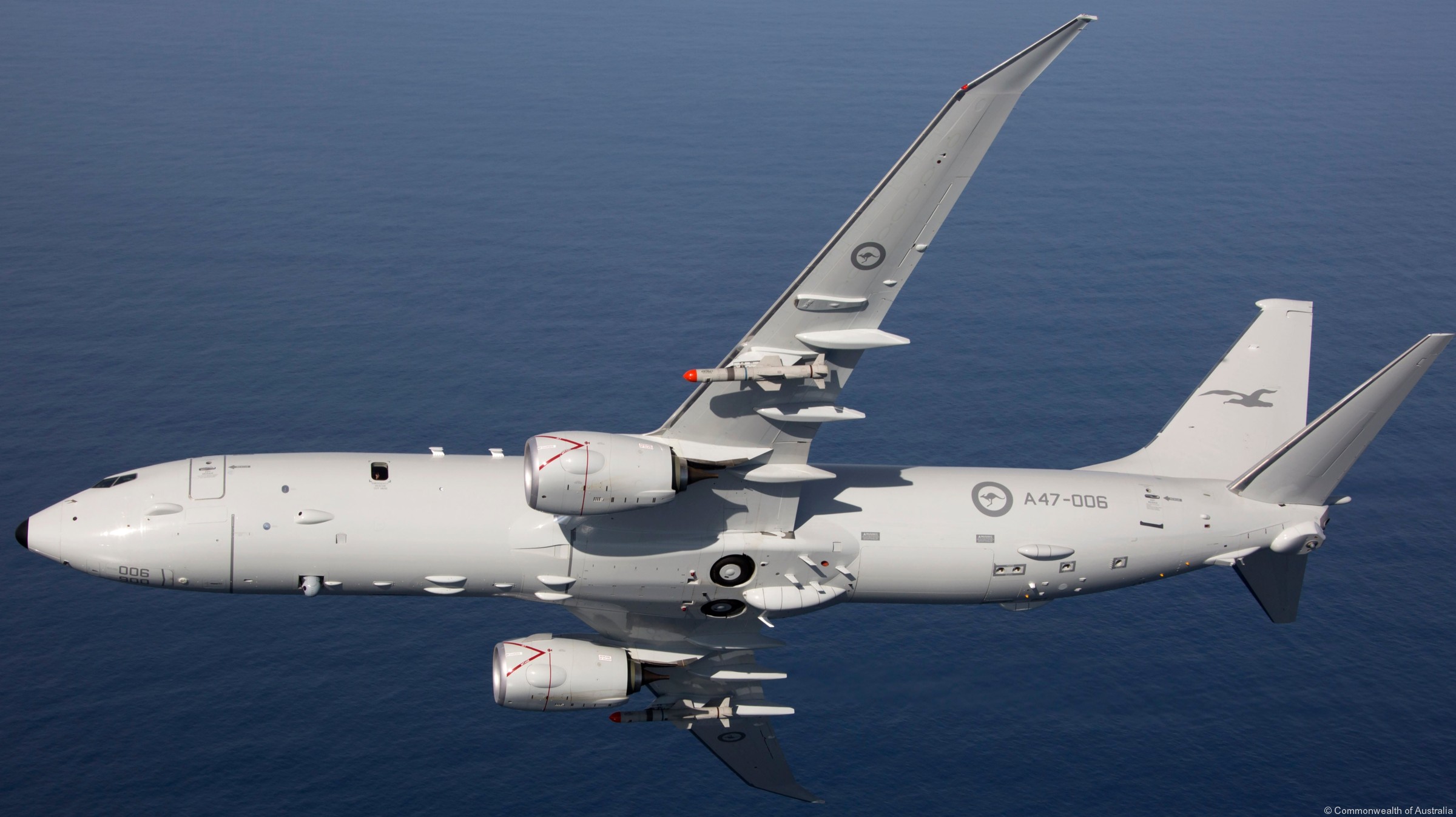 |
||
| 10/25 | ||
| Units: | ||
|
||
|
The Boeing P-8 Poseidon is an American
maritime patrol and reconnaissance aircraft developed and produced
by Boeing Defense, Space & Security, and derived from the civilian
Boeing 737-800. It was developed for the United States Navy (USN). The P-8 operates in the anti-submarine warfare (ASW), anti-surface warfare (ASUW), and intelligence, surveillance and reconnaissance (ISR) roles. It is armed with torpedoes, Harpoon anti-ship missiles, and other weapons and can drop and monitor sonobuoys. The P-8 is operated by the United States Navy, the Indian Navy, the Royal Australian Air Force, and the United Kingdom's Royal Air Force. It has also been ordered by the Royal Norwegian Air Force, the Royal New Zealand Air Force, the Republic of Korea Navy, and the German Navy. The P-8 is a militarized version of the 737-800ERX, a 737-800 with 737-900-based wings. The fuselage is similar to, but longer than, the 737-700-based C-40 Clipper transport aircraft in service with the USN. The P-8 has a strengthened fuselage for low-altitude operations and raked wingtips similar to those fitted to the Boeing 767-400ER, instead of the blended winglets available on 737NG variants. In order to power additional onboard electronics, the P-8 has a 180 kVA electric generator on each engine, replacing the 90 kVA generator of civilian 737s; this required the redesigning of the nacelles and their wing mountings. The P-8 has a smoother flight experience, subjecting crews to less turbulence and fumes than the preceding P-3, allowing them to concentrate better on missions. The P-8 features the Raytheon APY-10 multi-mission surface search radar. Unlike the preceding P-3, the P-8 lacks a magnetic anomaly detector (MAD) due to its higher operational altitude; its acoustic sensor system is reportedly more effective at acoustic tracking and thus lacking a MAD will not impede its detection capabilities; India's P-8I is equipped with a MAD per the contract request. Various sensor data are combined via data fusion software to track targets. Following the cancellation of Lockheed Martin's Aerial Common Sensor project, Boeing proposed a signals intelligence variant of the P-8 for the USN's requirement. During the P-8A Increment 2 upgrade in 2016, the APS-149 Littoral Surveillance Radar System (LSRS) will be replaced by the Advanced Airborne Sensor radar. The five operator stations (two naval flight officers plus three enlisted Aviation Warfare Operators/naval aircrewman) are mounted in a sideways row, along the port side of the cabin. Other than one large window on each side of the forward cabin for two observers, none of the other crew stations have windows. A short bomb bay for torpedoes and other stores opens behind the wing. The P-8 is to be equipped with the High Altitude Anti-Submarine Warfare Weapon Capability (HAAWC) Air Launch Accessory (ALA), turning a Mark 54 torpedo into a glide bomb for deploying from up to 30,000 ft (9,100 m). Australia (Royal Australian Air Force): On 20 July 2007, the Australian Minister for Defence announced that the P-8A was the preferred aircraft to replace the Royal Australian Air Force fleet of Lockheed AP-3C Orions in conjunction with a then yet-to-be-selected unmanned aerial vehicle. The last AP-3C was scheduled to be retired in 2018, after nearly 30 years of service. In March 2009, Australia's Chief of Air Force stated that the RAAF planned to introduce the P-8A in 2016. In October 2012, Australia formalized its participation, committing A$73.9m (US$81.1m) in an agreement with the USN. In July 2013, Air Marshal Geoff Brown, head of the RAAF, said Australia was considering buying more P-8As and fewer MQ-4C Triton UAVs than earlier planned. On 21 February 2014, Prime Minister Tony Abbott announced the intention to procure eight P-8As plus options for four more; entry into service is planned for 2021. In July 2014, negotiations commenced between Boeing and the US Department of Defense to integrate the AGM-84 Harpoon Block 1G anti-ship missile onto the P-8A on Australia's behalf. In August 2014, the USN concluded an advanced acquisition contract on the first four of up to 12 P-8As to be bought by Australia, with delivery expected from 2017. In January 2016, Australia ordered a further four P-8As. The 2016 Defence White Paper stated that eight P-8As would be in service in the early 2020s and that 15 P-8As are planned for by the late 2020s. Including support facilities, the first group of eight aircraft's total cost is estimated at $3.6 billion (AU$4 billion). The RAAF accepted its first P-8A on 27 September 2016; it arrived in Australia on 14 November. The RAAF had received 12 P-8As by 13 December 2019. The Australian Government approved ordering two additional aircraft on 30 December 2020. The option to acquire a 15th aircraft may not be taken up. General characteristics: Crew: Flight: two; Mission: seven Capacity: 19,800 lb (9,000 kg) Length: 129 ft 5 in (39.47 m) Wingspan: 123 ft 6 in (37.64 m) Height: 42 ft 1 in (12.83 m) Empty weight: 138,300 lb (62,730 kg) Max takeoff weight: 189,200 lb (85,820 kg) Powerplant: 2 x CFM56-7B27A turbofans, 27,000 lbf (120 kN) thrust each Maximum speed: 564 mph (907 km/h, 490 kn) Cruise speed: 509 mph (815 km/h, 440 kn) Combat range: 1,381 mi (2,222 km, 1,200 nmi) ; 4 hours on station Ferry range: 5,200 mi (8,300 km, 4,500 nmi) Service ceiling: 41,000 ft (12,500 m) Armament: 11 hardpoints (internal bay with 5 hardpoints / 6 external hardpoints) for a variety of weapons: AGM-84 Harpoon anti-ship missiles Lightweight anti-submarine torpedoes mines and/or depth charges up to 129 sonobuoys Avionics: Raytheon APY-10 multi-mission surface search radar AN/ALQ-240 Electronic Support Measures Suite AN/APS-154 Advanced Airborne Sensor source: wikipedia+ |
||
| images | ||
 P-8A Poseidon (A47-009)  P-8A Poseidon (A47-007)  P-8A Poseidon (A47-012) 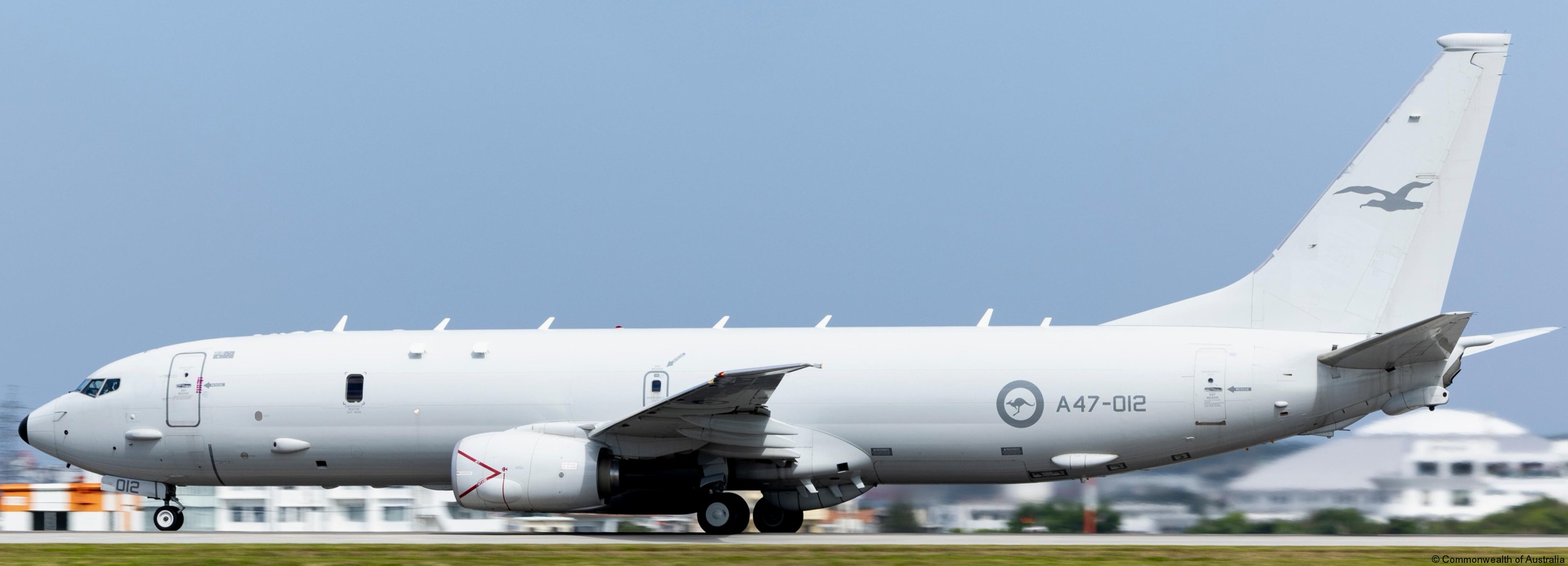 P-8A Poseidon (A47-012)  P-8A Poseidon (A47-006)  P-8A Poseidon (A47-007)  P-8A Poseidon (A47-012)  P-8A Poseidon (A47-005)  P-8A Poseidon (A47-008)  P-8A Poseidon (A47-001)  P-8A Poseidon (A47-004) 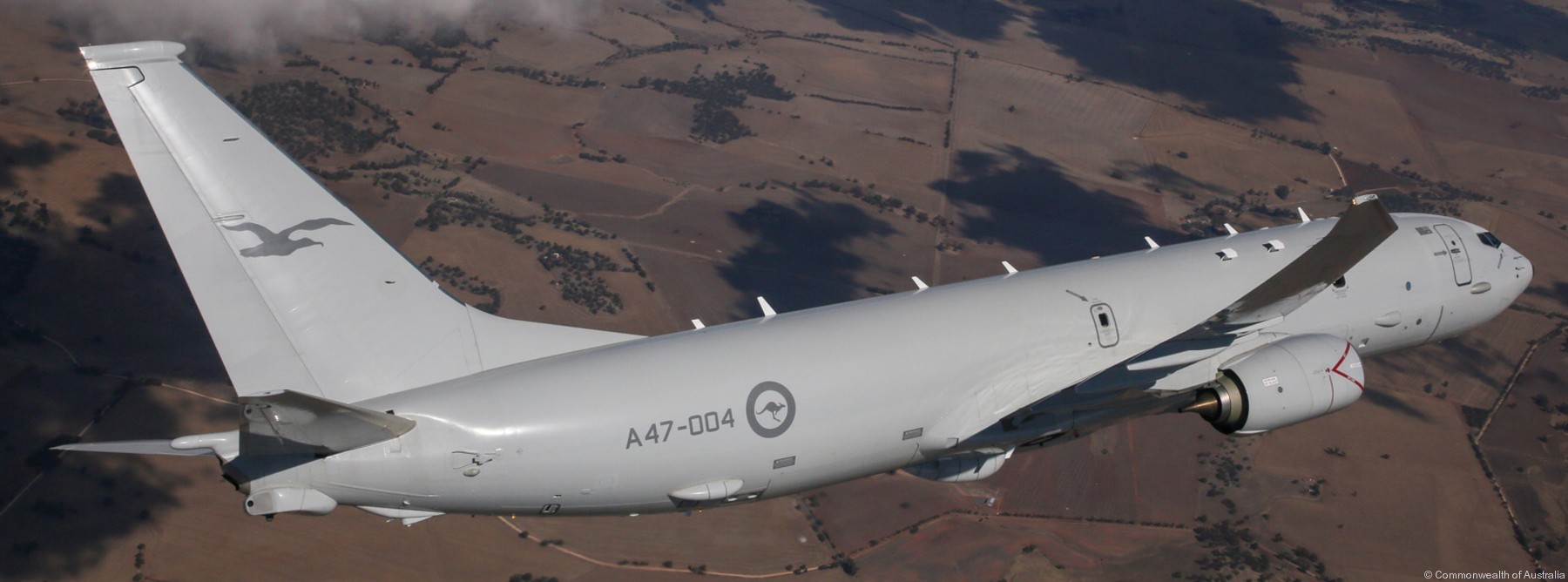 P-8A Poseidon (A47-004)  P-8A Poseidon (A47-010)  P-8A Poseidon (A47-007)  P-8A Poseidon (A47-007) 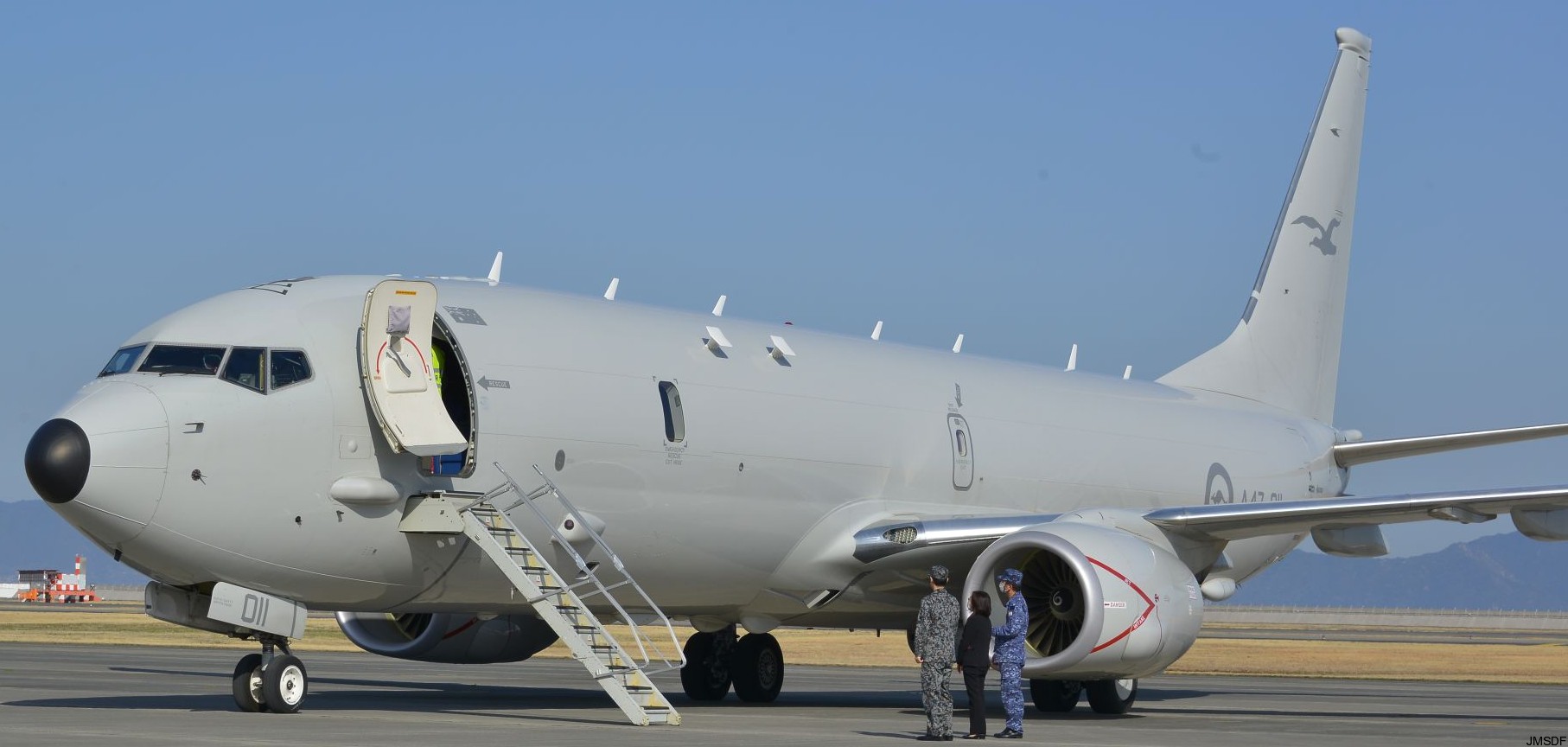 P-8A Poseidon (A47-011)  P-8A Poseidon (A47-010)  P-8A Poseidon (A47-007) 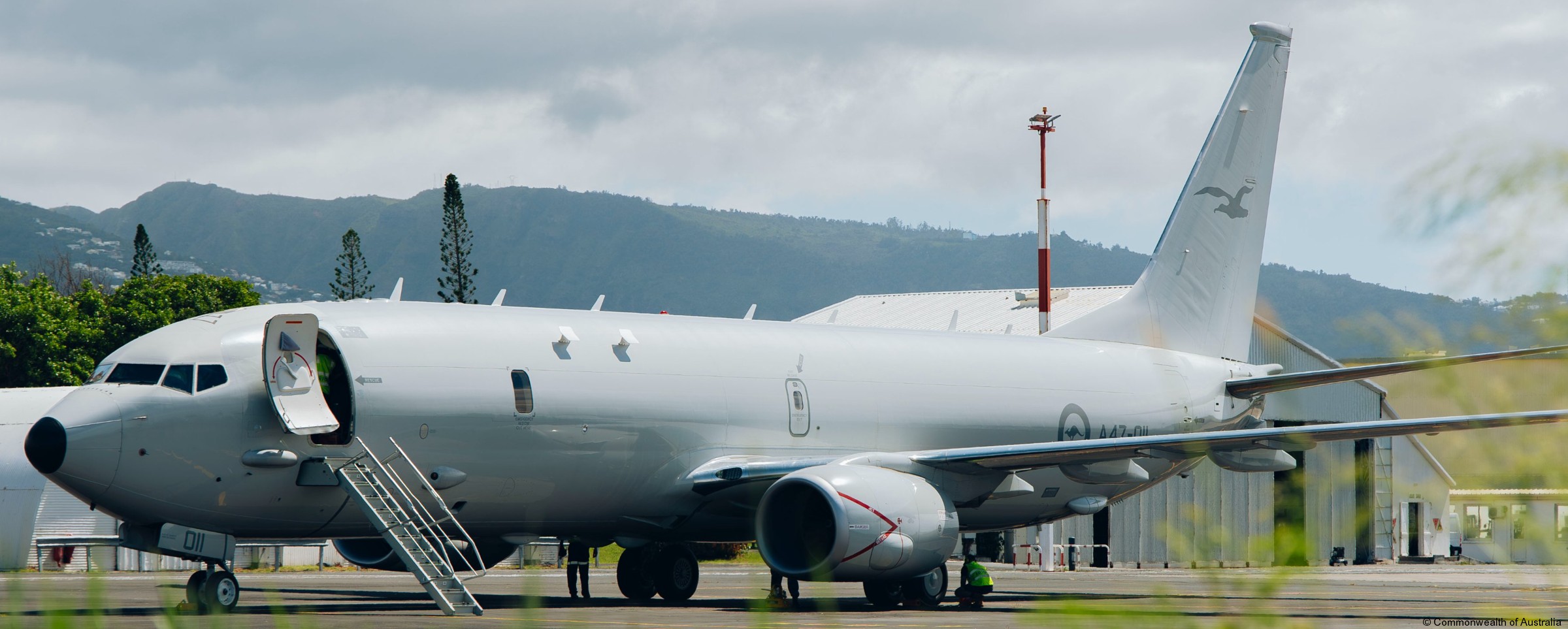 P-8A Poseidon (A47-011)  P-8A Poseidon (A47-007)  P-8A Poseidon (A47-007) 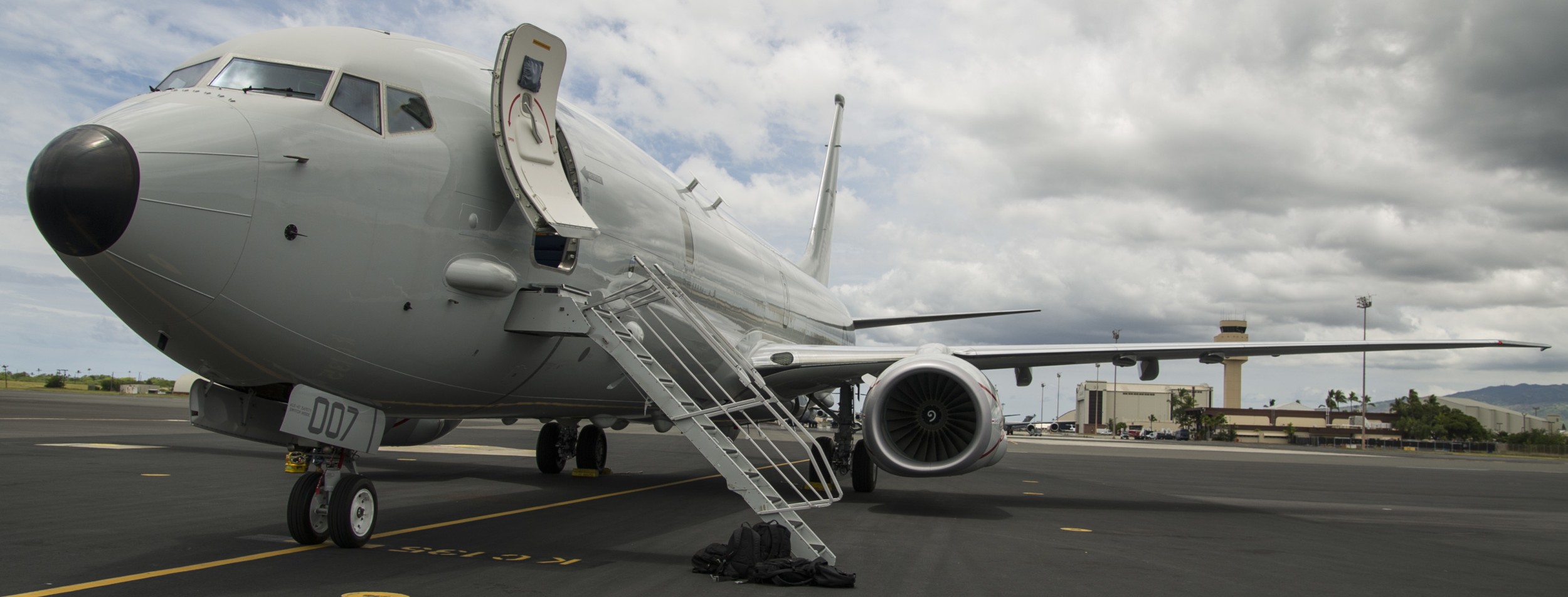 P-8A Poseidon (A47-007) 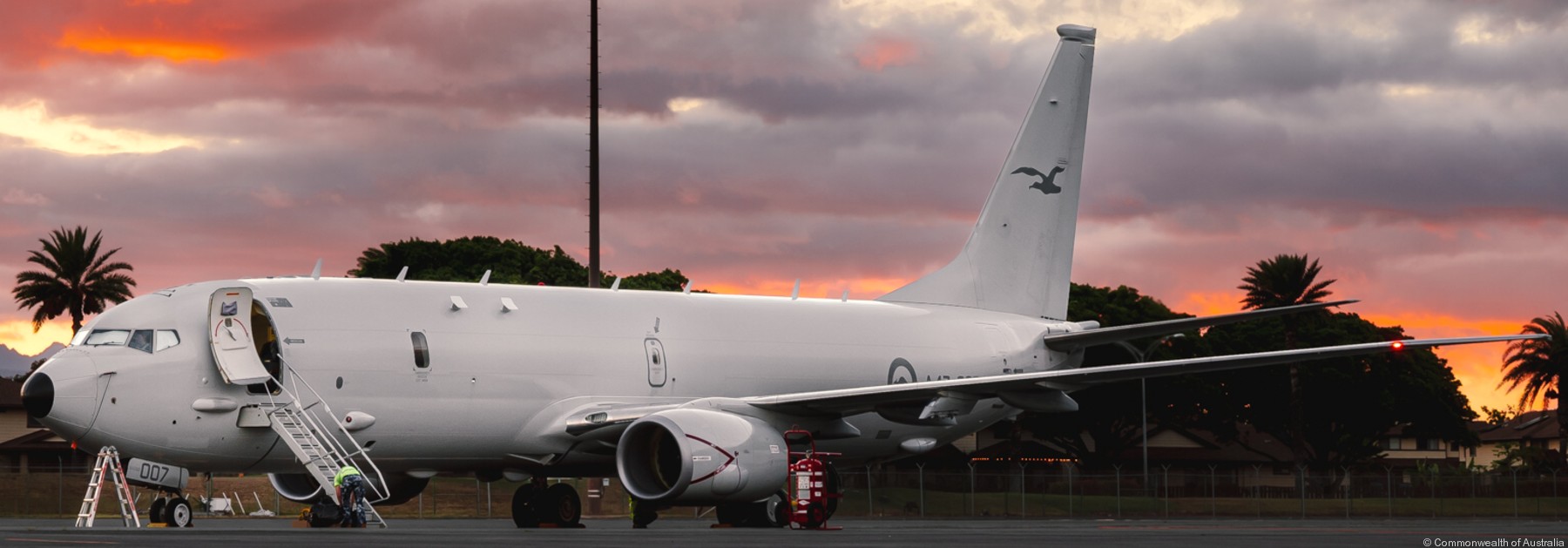 P-8A Poseidon (A47-007)  P-8A Poseidon (A47-008) 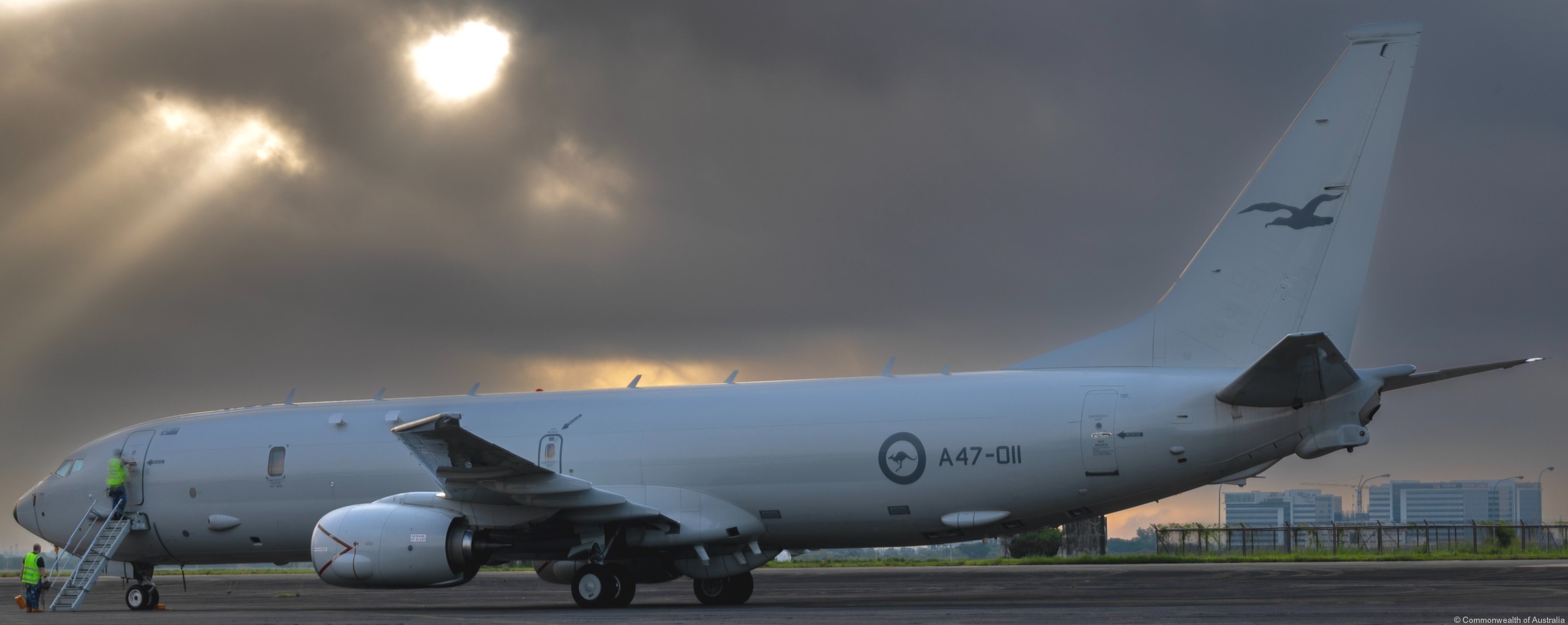 P-8A Poseidon (A47-011)  P-8A Poseidon (A47-011)  P-8A Poseidon (A47-007) 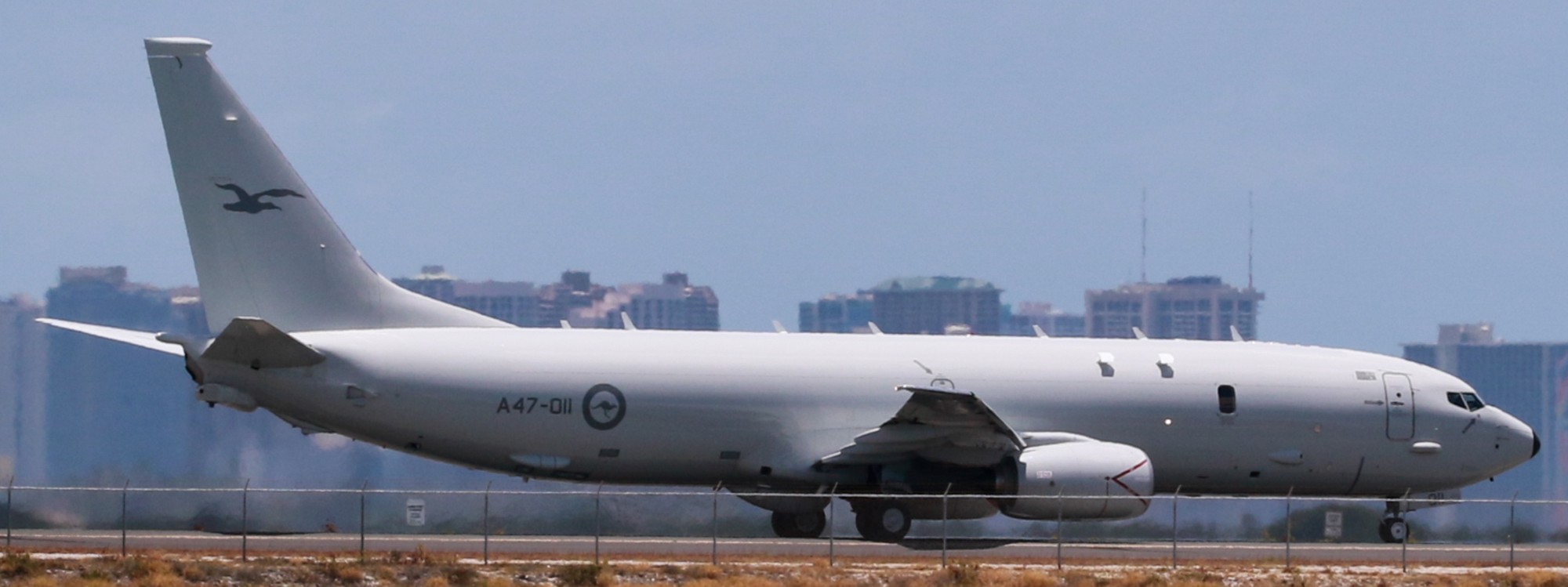 P-8A Poseidon (A47-011)  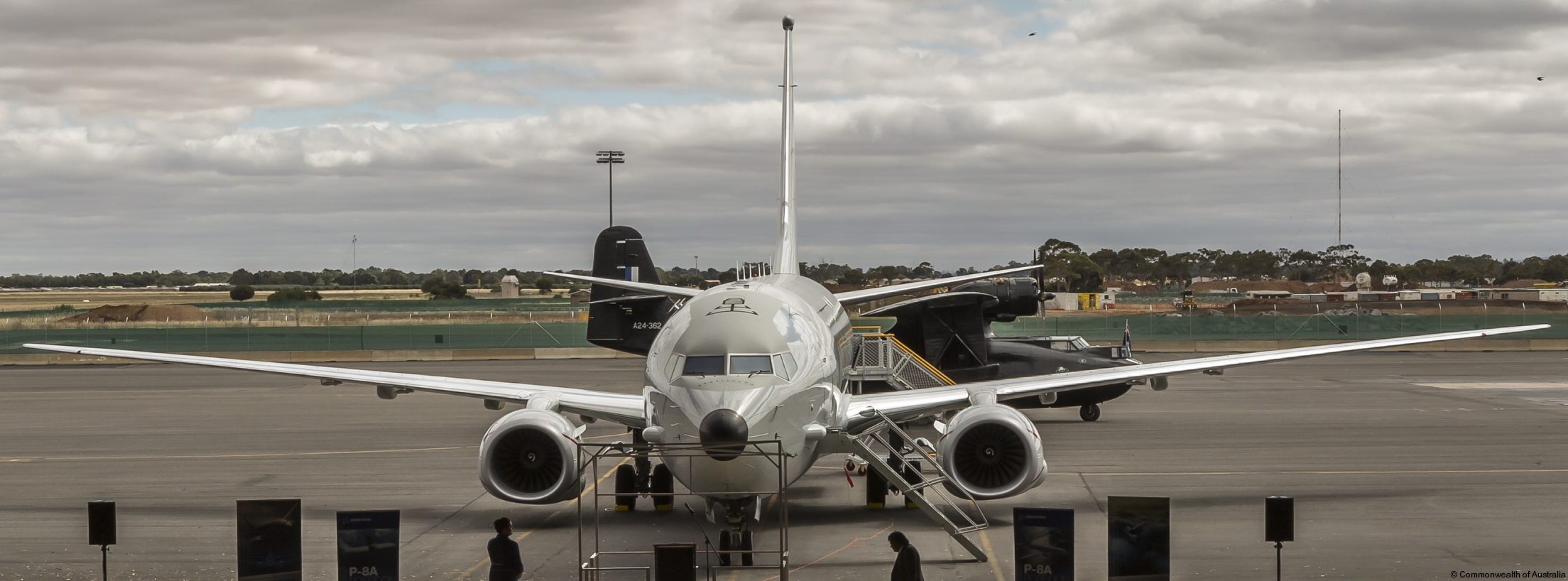 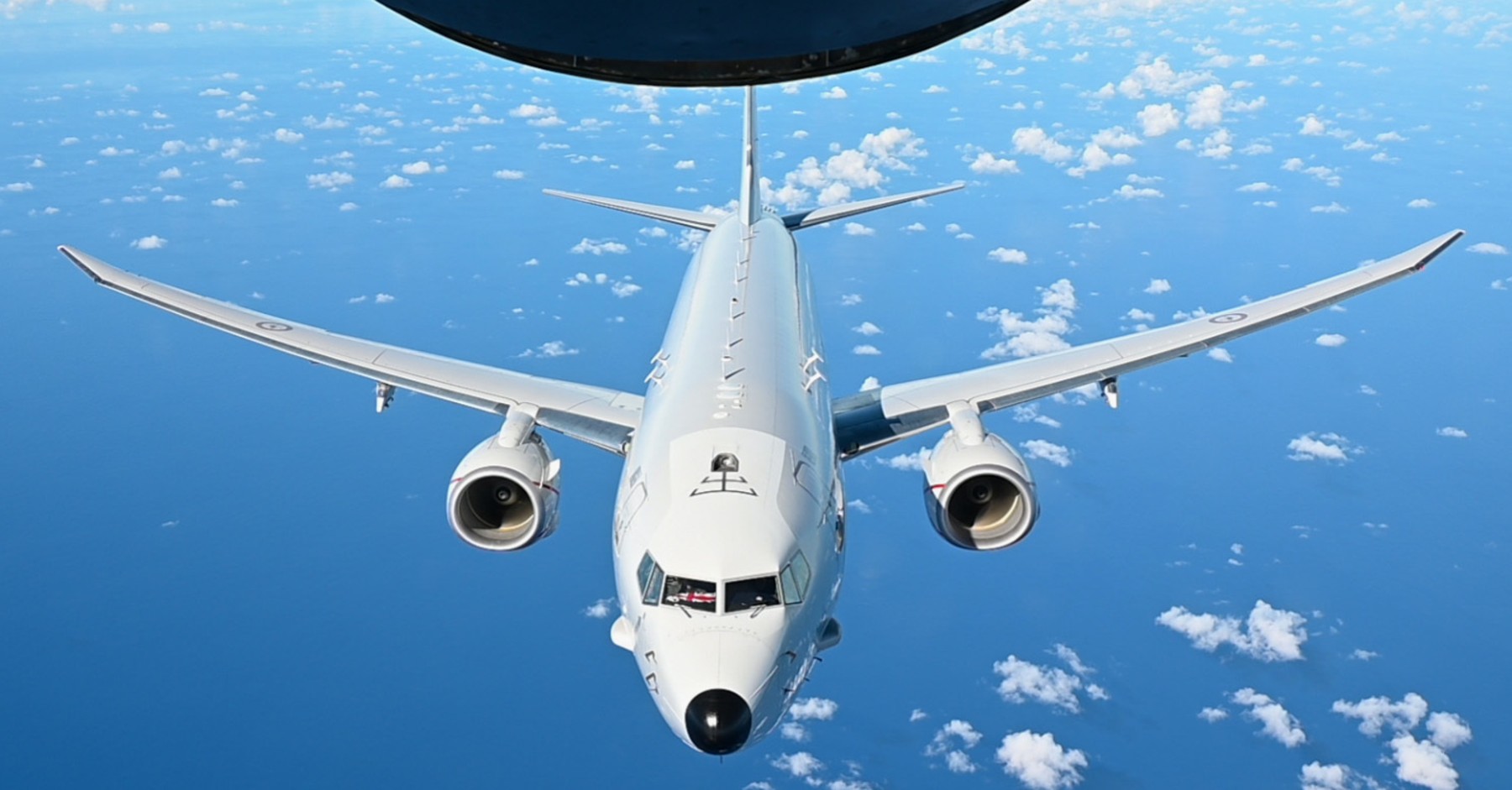  with two AGM-84 Harpoon missiles  AGM-84 Harpoon missile loading 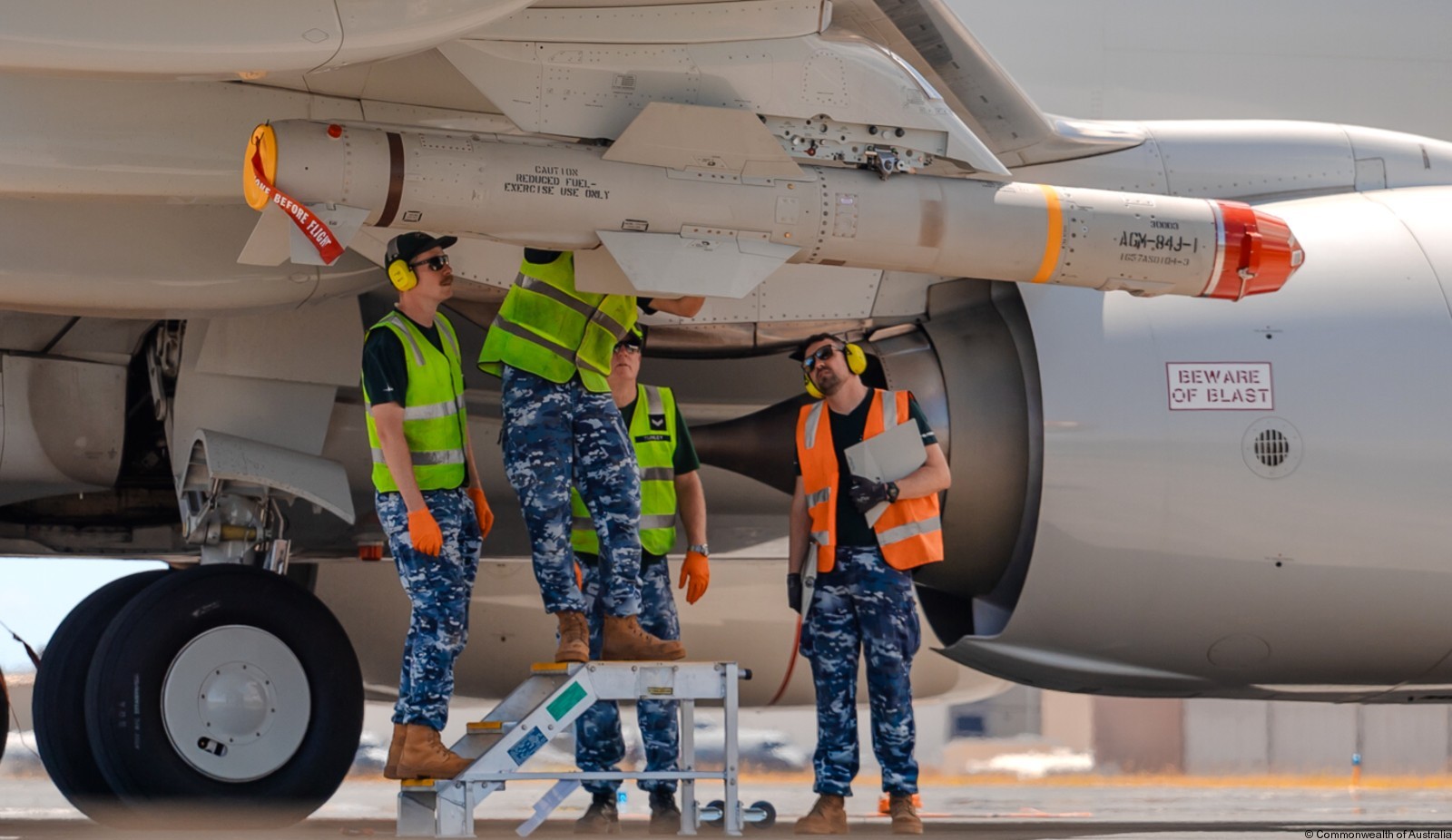 cutout  AGM-84 Harpoon missile loading  launching an ATM-84J Harpoon missile |
||
|
|
seaforces.org
|
Royal
Australian Navy start page
| |
